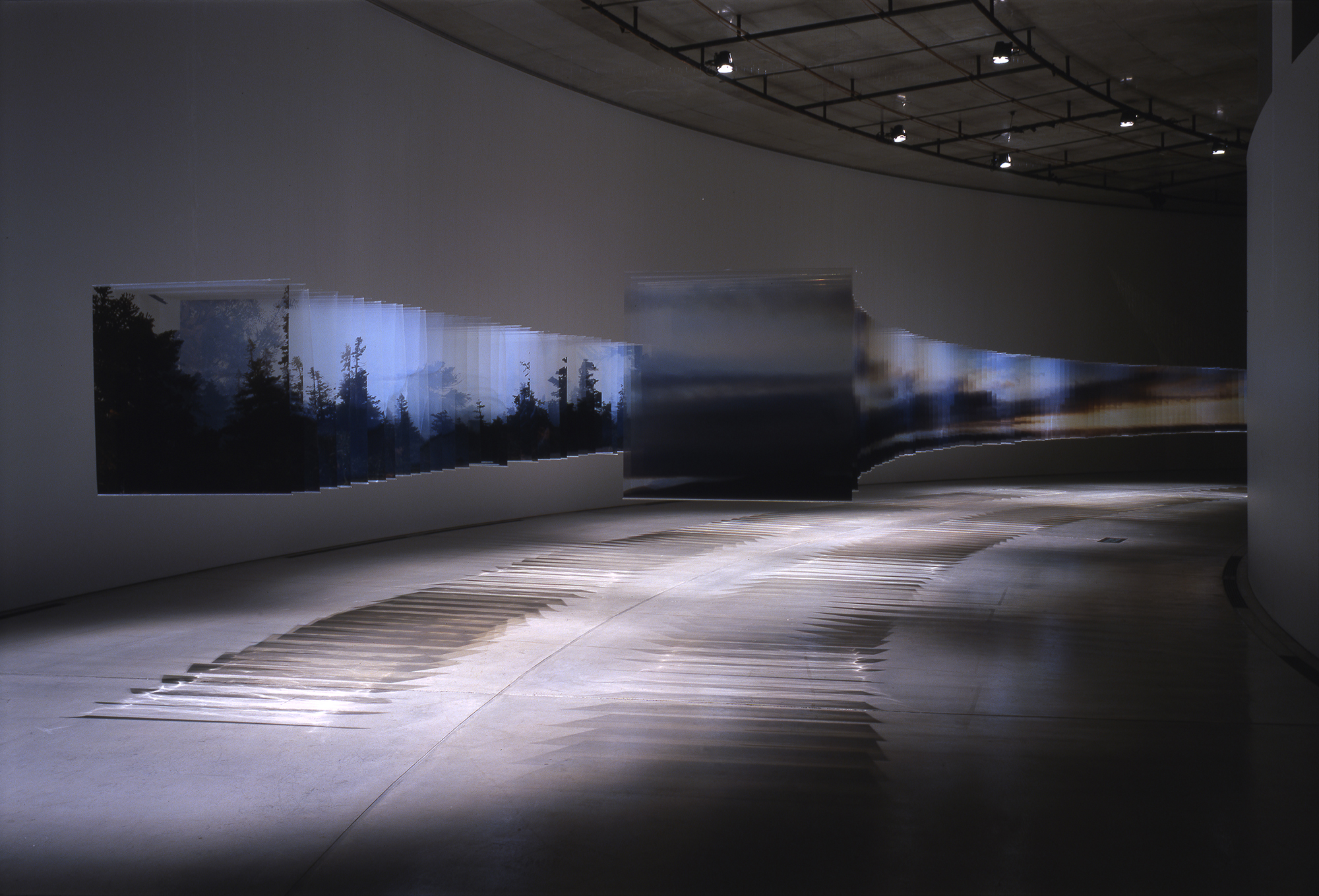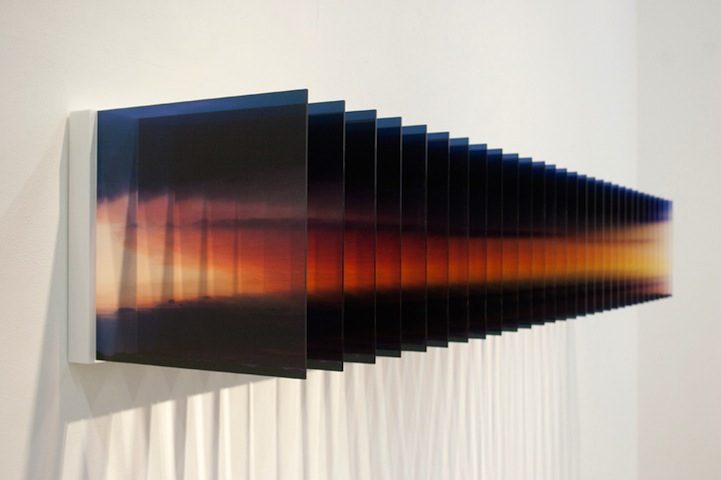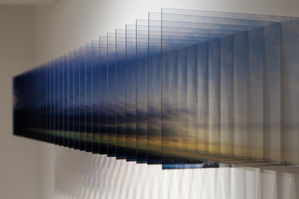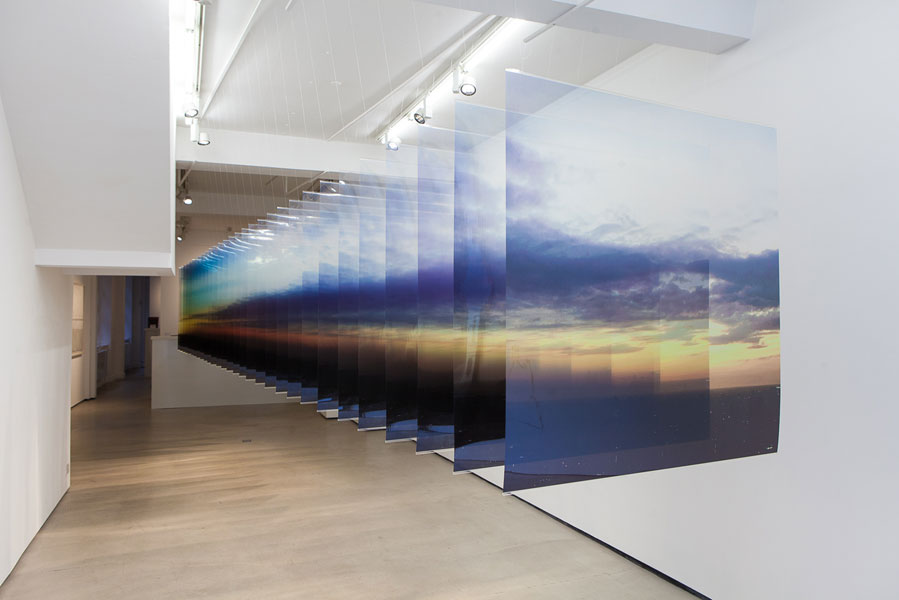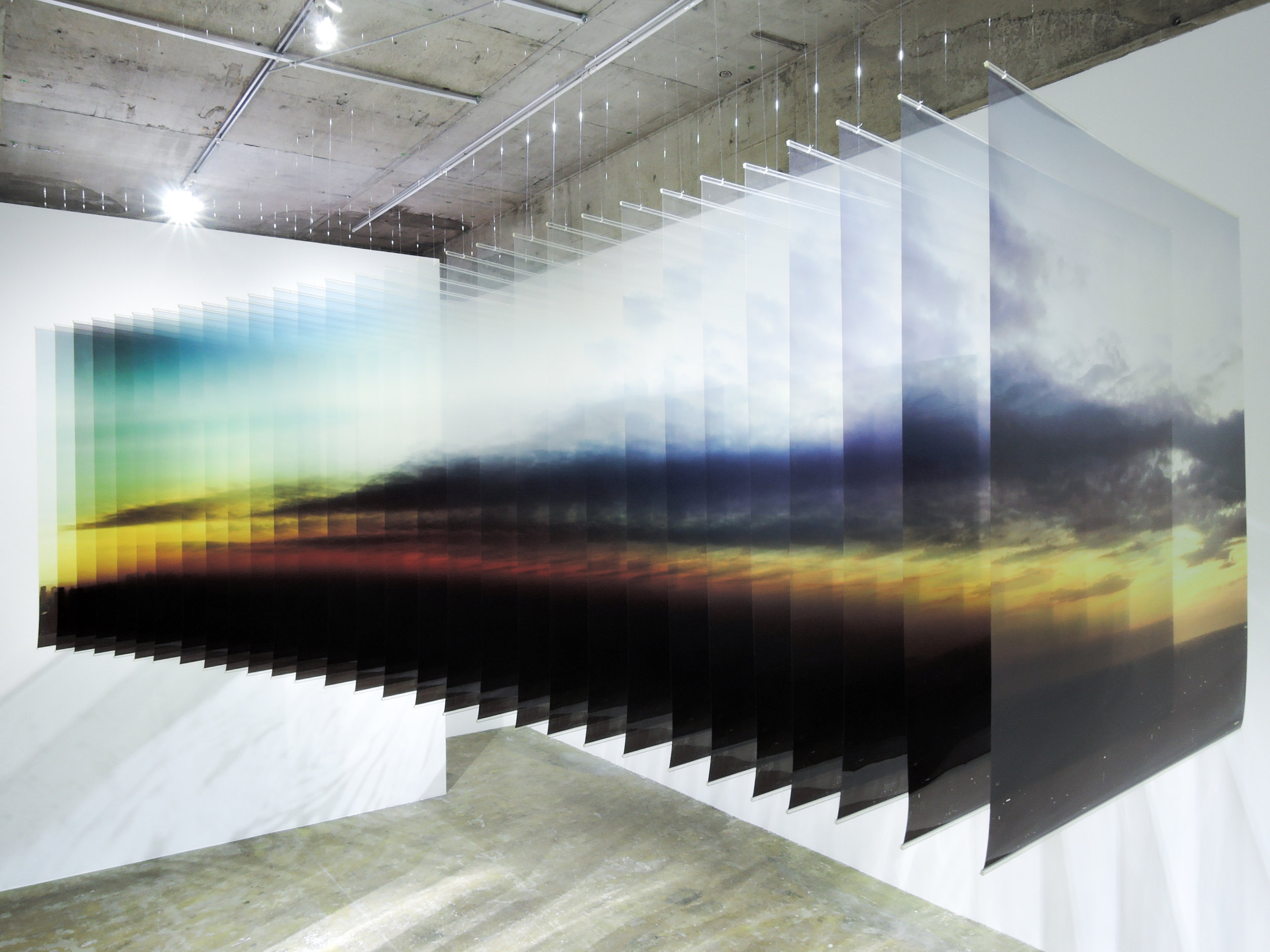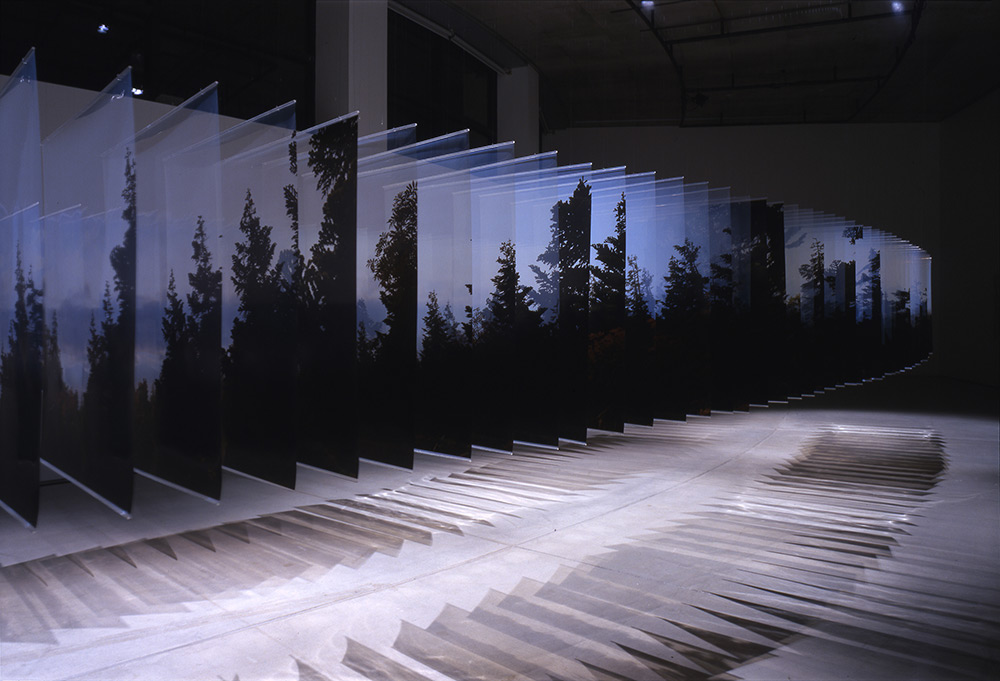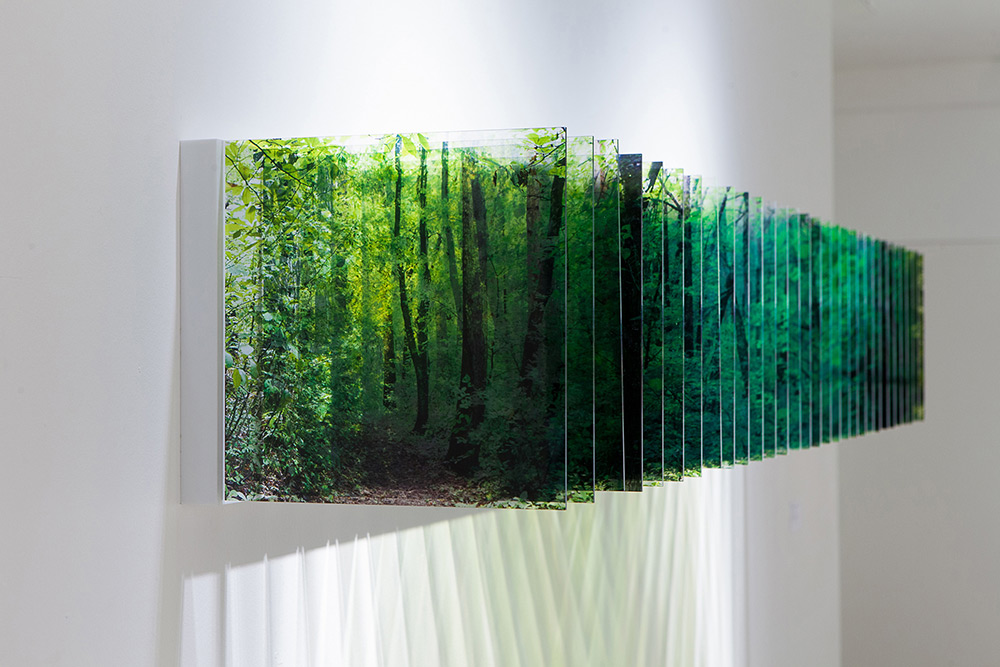Nakanishi Inkjet-printed photos on plexiglass acrylic, sequences of photos of landscapes and the environment placed in chronological order in a layered, multi-dimensional view.
The construction and presentation of the images is very elegant, something that I would strive for in my work. The layering is effective in bringing a multi-dimensional view from many different perspectives.
“We are all subject to the passing of time, yet each of us feels and perceives it in our own way,” says Nakanishi, “Time itself has no shape or boundary and cannot be fixed or grasped. When we look at the photographs in these sculptures, we attempt to fill in the gaps between the individual images. We draw from our physical experiences to fill in missing time and space, both ephemeral and vague. In this series, I attempt to depict time and space as sensations shared by both viewer and artist.” https://www.thisiscolossal.com/2017/06/layer-drawings/
I find his comparing this layering technique to time, similar to my thinking. The Layering of still frames allows the viewer to step through or see visually the time in film, the time in photography. The layering transfers the dimension of time from animation and movement, into one that is physical and simultaneous. Nakanashi emphasises the viewer’s automated attempts to fill in the gaps between still frames, the missing time and space. This response to still frames in succession, is something that is ingrained in us from the illusory techniques of cinema.
Nakanishi takes the photographs over an extended period of time, placing them in a succession, whereas I have taken one filmed moment of time and printed the 24 frames per second of still frames. If watched on TV, this ‘moment’ would be a succession of still frames that had the illusory power to bring movement and time. When printed out in succession the illusion of cinema is gone and what is in its place?
The illusion is implied perhaps, or the illusion is highlighted. The optical magic of cinema is still present though in a divergent way. The viewer can focus on their own movement, being now in a position to be an agent in the film viewing experience/spectacle.

